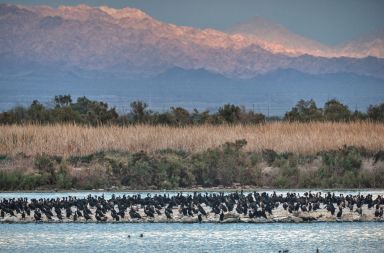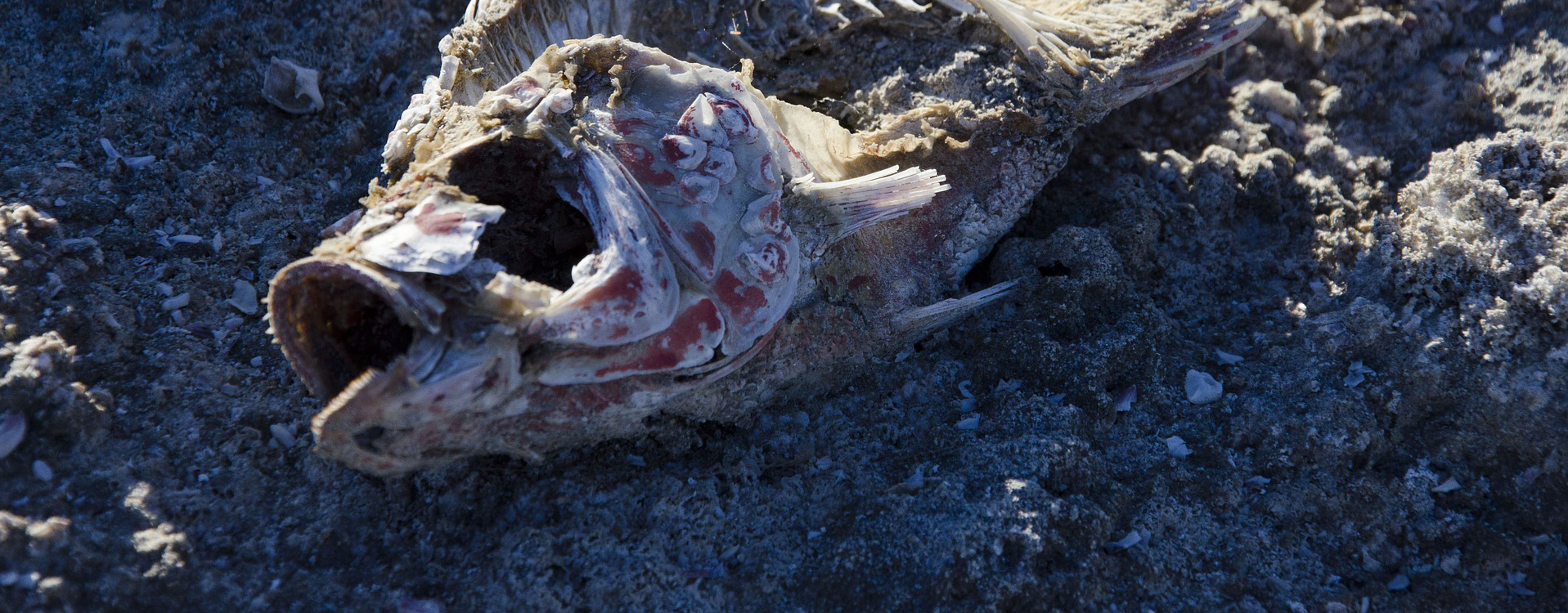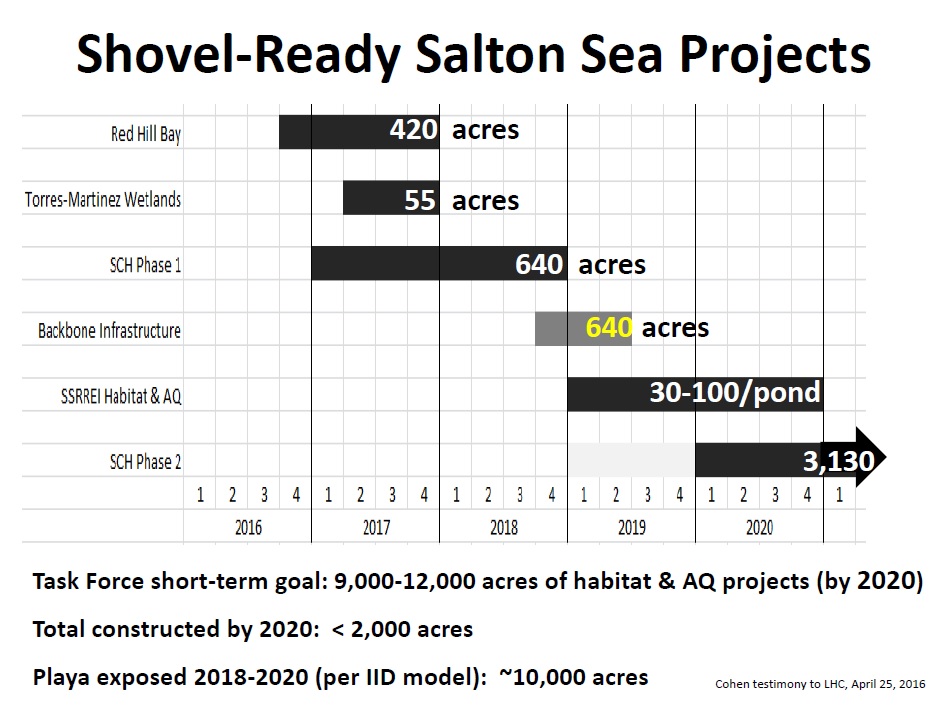In Salt Dreams, Bill DeBuys writes,
“In low places consequences collect.”

Southern California’s Salton Sea collects and manifests the hydrologic consequences of intensive agriculture in the Colorado River basin, the leaching of salts and selenium from ancient seabeds now elevated high in the Colorado Plateau, and the fertilizers and pesticides running off of the fields in the Imperial, Coachella, and Mexicali valleys. The Sea also reflects the consequences of political and economic decisions and deals in the basin and in Southern California.
By 2018, the Salton Sea will begin to reflect the consequences of the nation’s largest agriculture-to-urban water transfer, a long-term deal that has helped San Diego and the urban coast survive California’s persistent drought but that will soon cause the Sea’s surface to drop by 20 feet and its salinity to triple.
The shrinking Salton Sea poses several significant threats, including the loss of habit for more than 420 species of birds – often numbering in the thousands of individuals – and of the ecosystem as a whole due to rapidly rising salinity, as well as the exposure of tens of thousands of acres of dust-emitting lakebed in a region where air quality regularly fails to meet state and federal standards. The loss of the ecosystem and the escalating health costs driven by poor air quality, combined with massive fish and bird die-offs and associated impacts on local and regional property values, could cost the region tens of billions of dollars over the next 30 years.

Recently, California recognized its responsibility to protect the Salton Sea and set admirable short-term habitat and dust suppression goals. The governor’s budget contains $80 million for Salton Sea projects over the next three years, a small fraction of the total investment needed but an excellent start. And a recent report to the legislature detailed several “shovel-ready” habitat projects at the Salton Sea. Yet, as shown in the figure below, the proposed habitat projects won’t even keep pace with the amount of lakebed exposed in the next several years.
In collaboration with other organizations, the Institute has recommended several specific actions and steps to accelerate and expedite the state’s implementation of habitat and dust suppression projects at the Salton Sea. California has yet to recognize the consequences of failing to take significant action at the Salton Sea, or the urgency of the threat. Unlike the challenges of protecting habitat and human health in most of the water-starved West, the problem is not a lack of water but rather a lack of political will. With the $80 million in the governor’s budget and a dedicated effort from state staff and local stakeholders, we could celebrate the completion of thousands of acres of high-quality, dust-suppressing habitat in the next few years. Success is within reach – it just requires discipline and effort.



